Speaking to the New York Times this weekend, London’s adopted Turkish-Cypriot designer Hussein Chalayan gave his honest opinion on the current state of the fashion industry. “The boom in nepotism in fashion has had a hand in killing a lot of the industry’s creativity. The industry favors all the same people and it is really boring,” he explained candidly, when asked about the “forces reshaping fashion in 2019. “[From] stylists to photographers to designers — the same designer musical chairs in the same big groups even when individuals don’t even fit the roles they are given. There is a lot of cowardliness, too. People are scared to speak out so they just go along with the status quo.”
Undoubtedly, Chalayan is a designer in a position to make this criticism. His work and its perspective, its energy, its power, have remained uncompromised from the day he left the Fashion Design course at Central Saint Martins in 1993. The Tangent Flows, his graduate collection, contained oxidised garments that had been left in a back garden for some months and exhumed pre-show. Launching his eponymous brand a year later, he’s continued to take this innovative approach to design and invigorate the London Fashion Week womenswear and menswear schedule. Offering performances rather than shows — the kite dresses of 1997, the hijabs of 1998, the coffee table dress of 2000 — he’s been commended for blurring the lines between fashion and art.
This season, Chalayan marked his quarter-century showing in the capital at Islington dance theatre Sadler’s Wells. Ushering in the show was a highlight reel of his past collections across a big screen. The collection that followed contemplated the idea of pretension. “Pretension,” the show notes opened, “is often seen in a negative light suggesting ingenuity, falseness and an attempt to appear as something not based on the truth.” But we shouldn’t think of it simply as this. “Pretence in all given facets of life is a necessary catalyst to help us look at the world in a more imaginative way.”
This led way to clothes that imagined a woman “in ill-repute”, coupled with ideas of fetishism. Among the more demure, wearable dresses, one-pieces, suits and skirts, the occasional model was accompanied by fan-wielding, veil-wearing assistants, a little reminiscent of both a puppeteer, and of a gimp. Elsewhere there were leather corsets, harness-details to tops, and face masks that had gloved hands and arms entwined around the models head, arranged in a way to convey the idea of vogueing.
There were touches of his previous collection there. The striped jumpers, jersey dresses, tailored jackets with broadened shoulders. But autumn/winter 19 was much darker in mood than spring/summer 19, more intrigued by the possibilities of nighttime. Not interested in a big fanfare around his quarter-century, it was an understated, contemplative collection that finished with the dresses of the last three models elegantly carried along the runway by the masked figurines, accentuating their liberated shape and freedom to move. It’s these touches of theatrics that will forever set Hussein Chalayan apart.
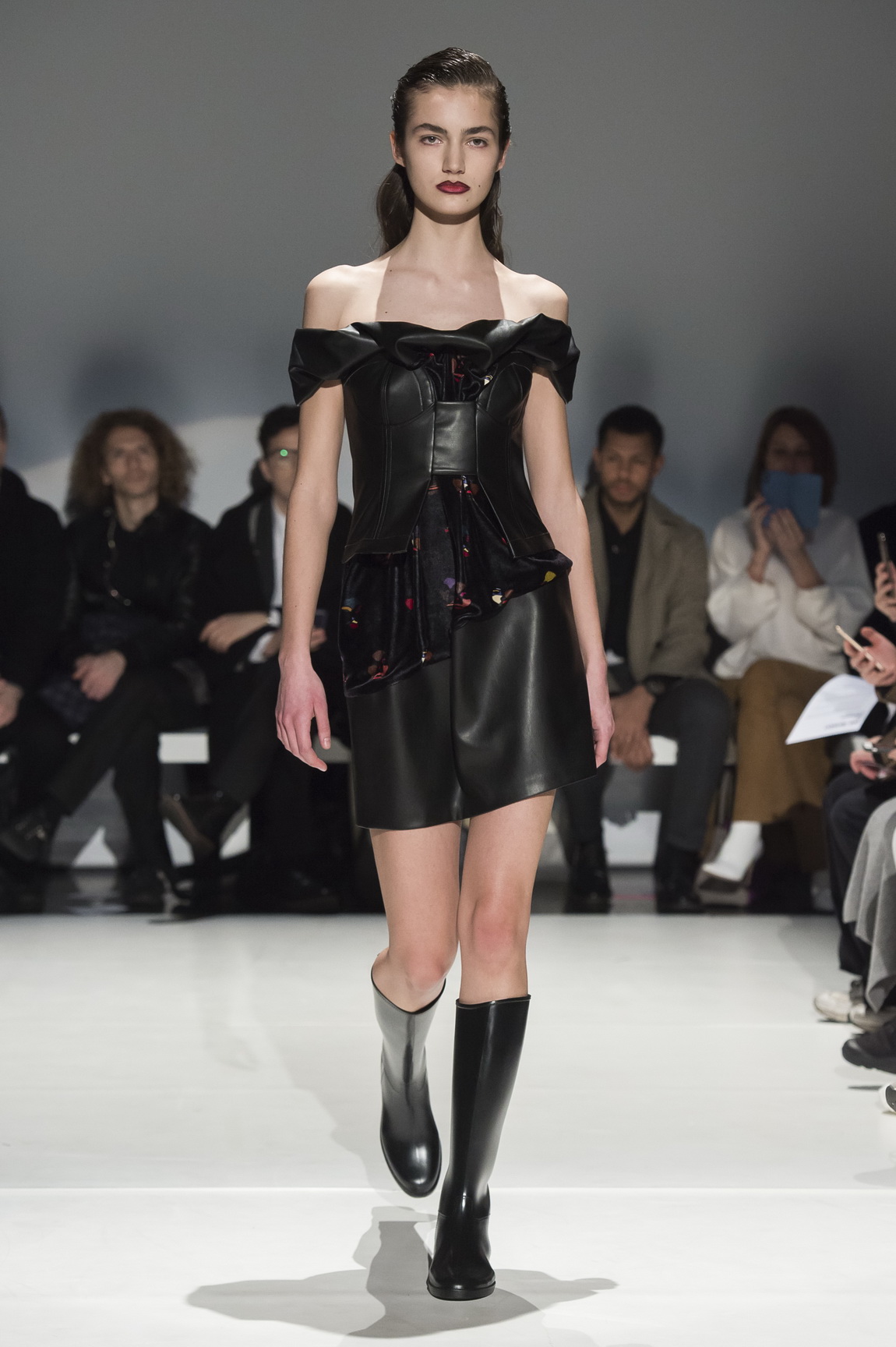
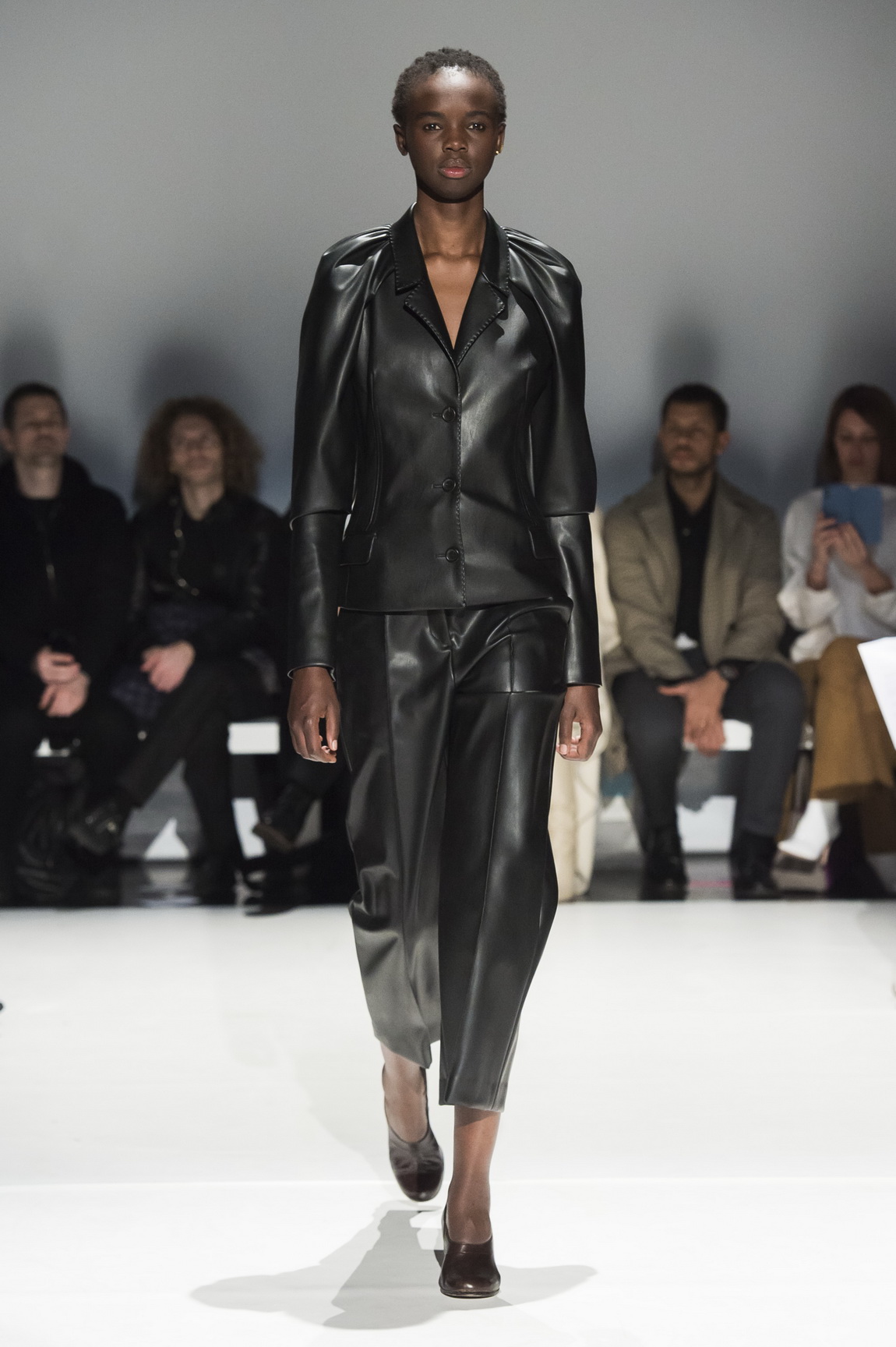
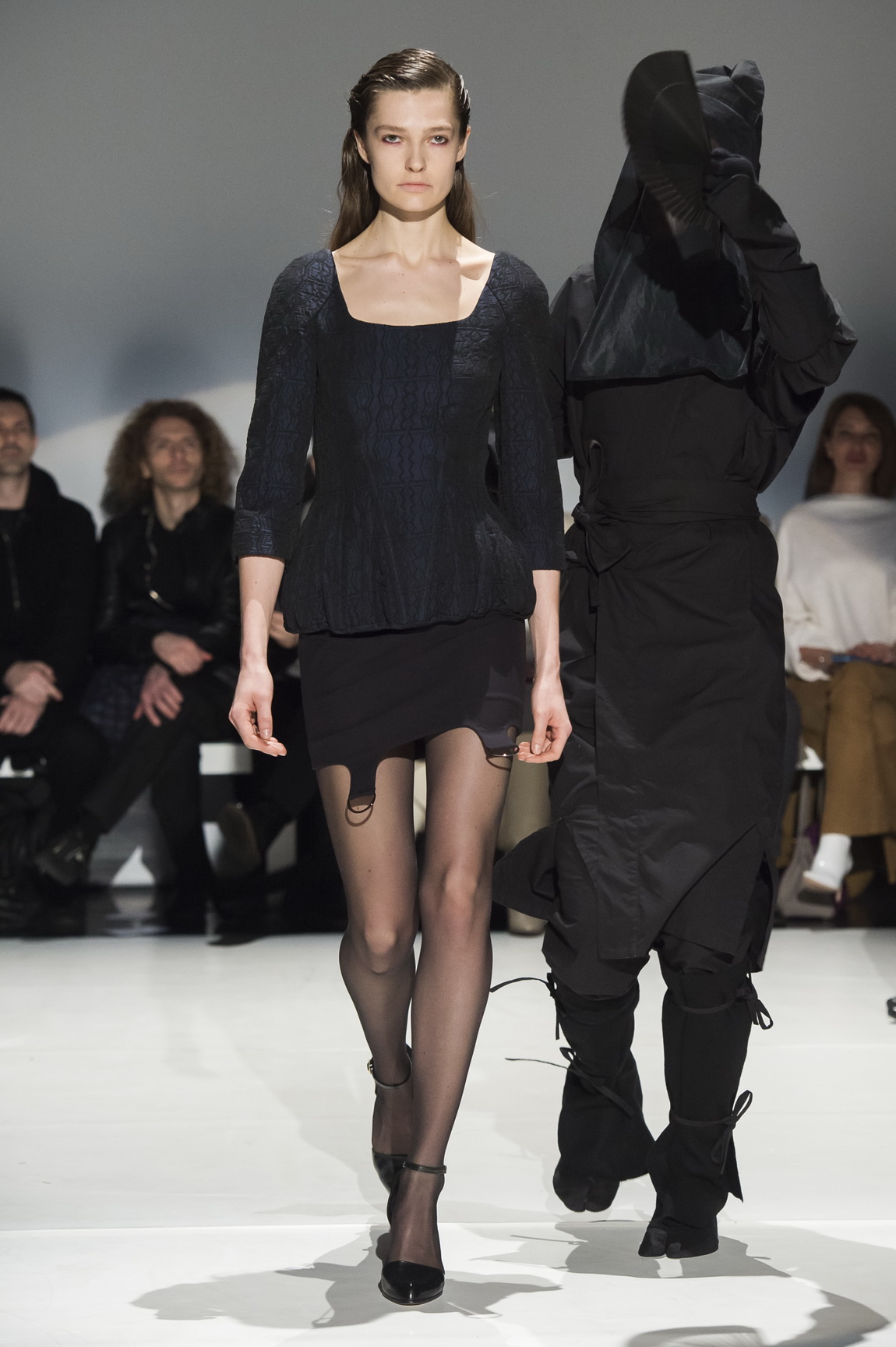
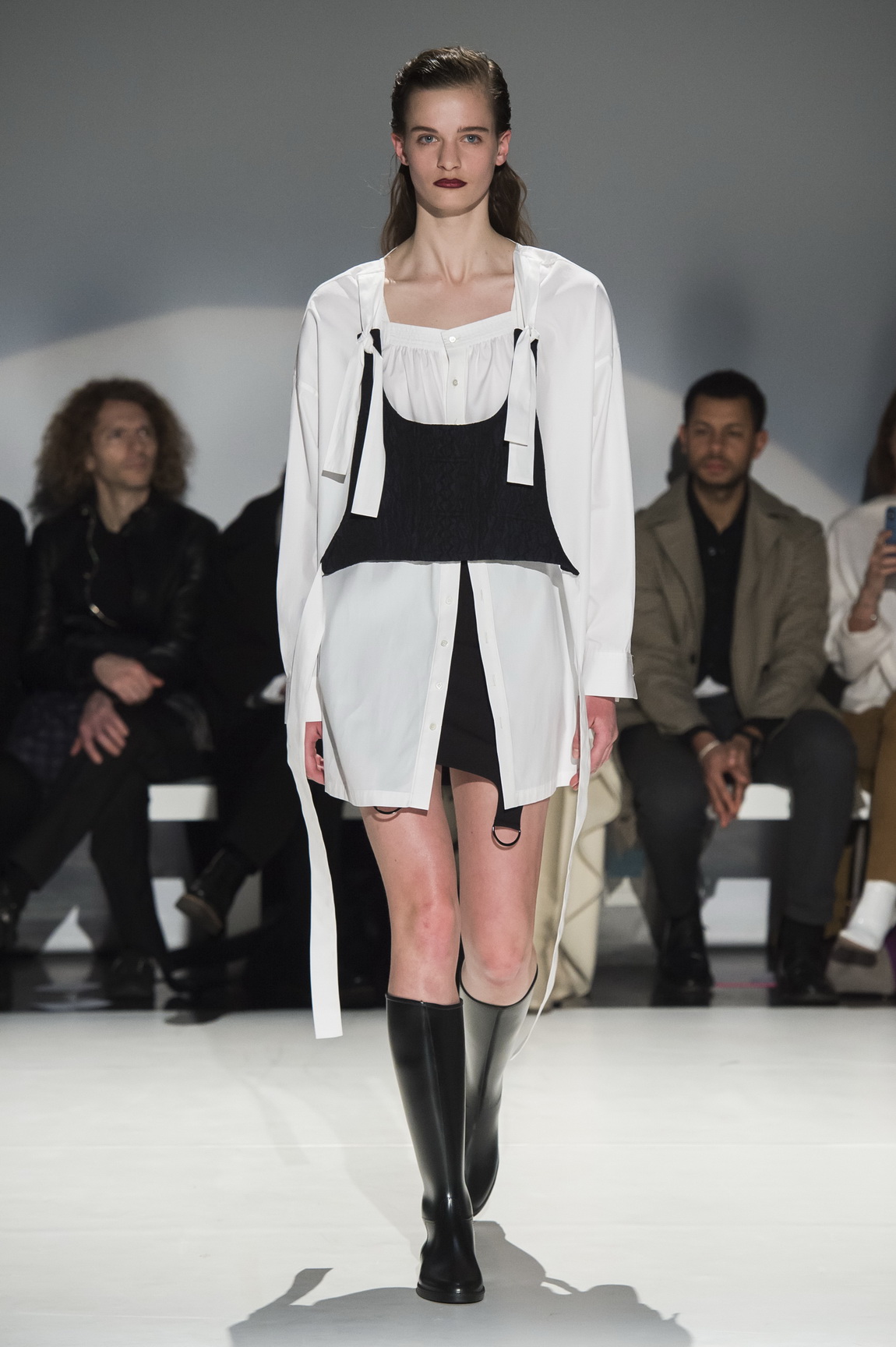
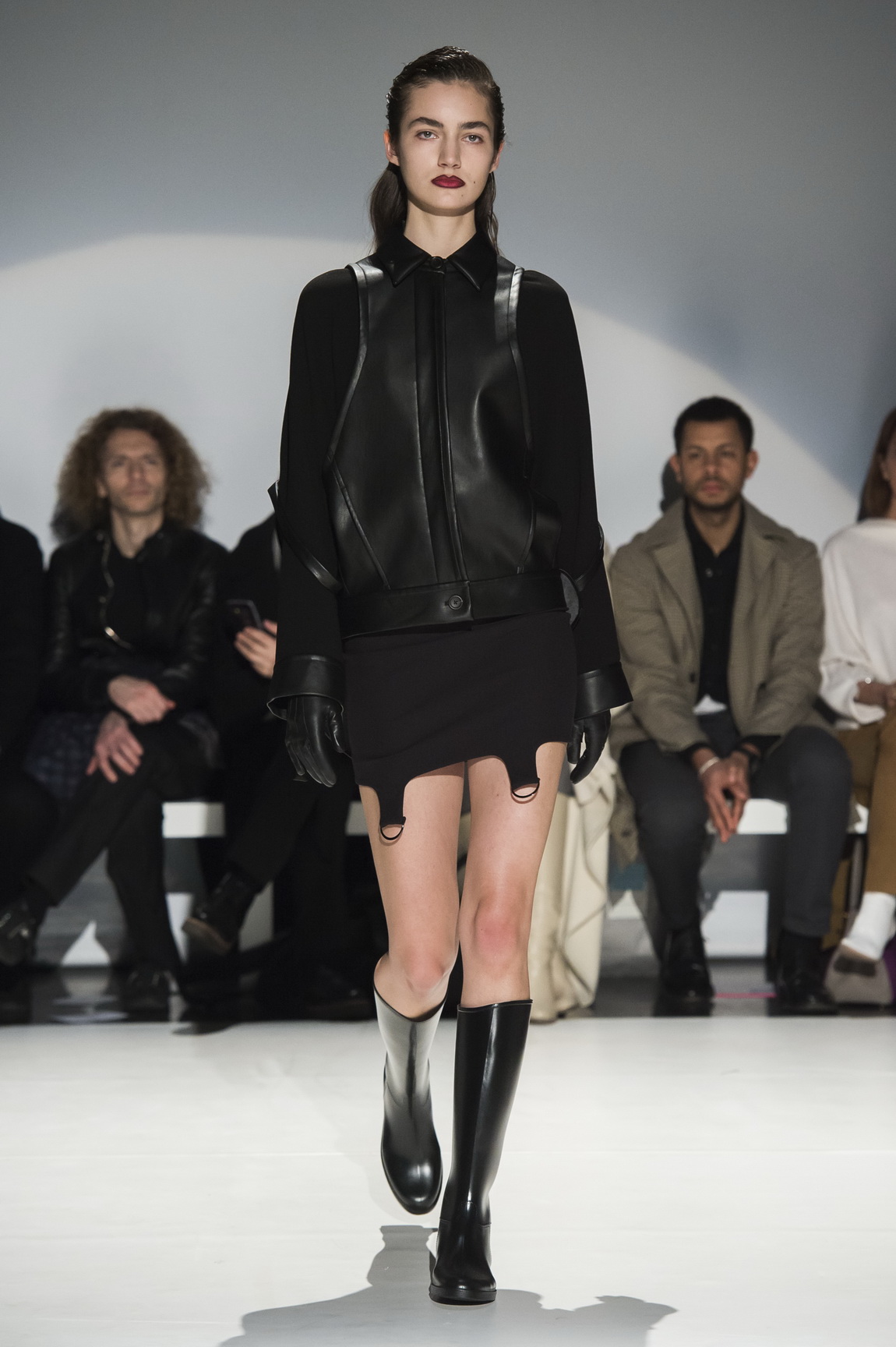
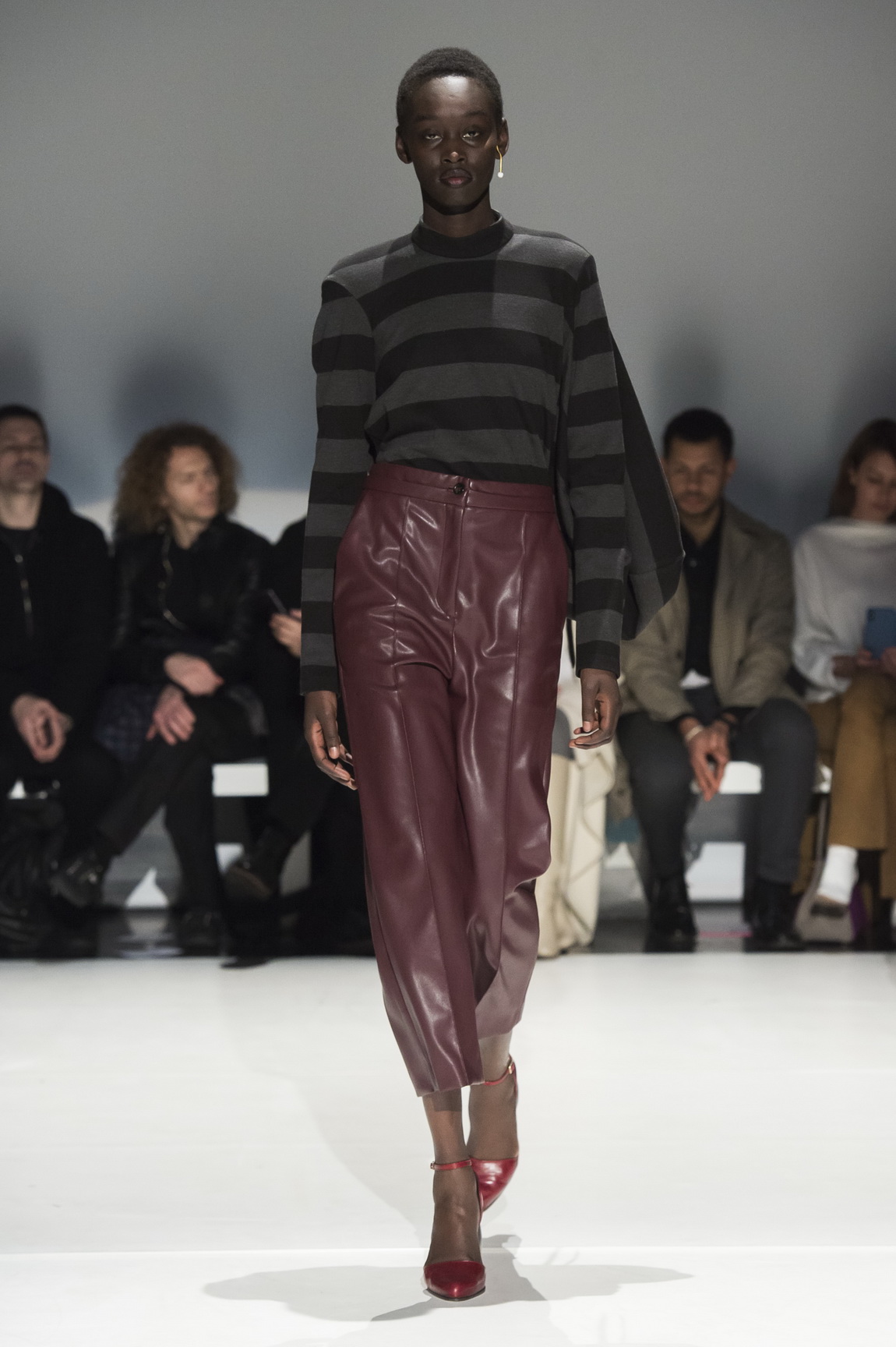
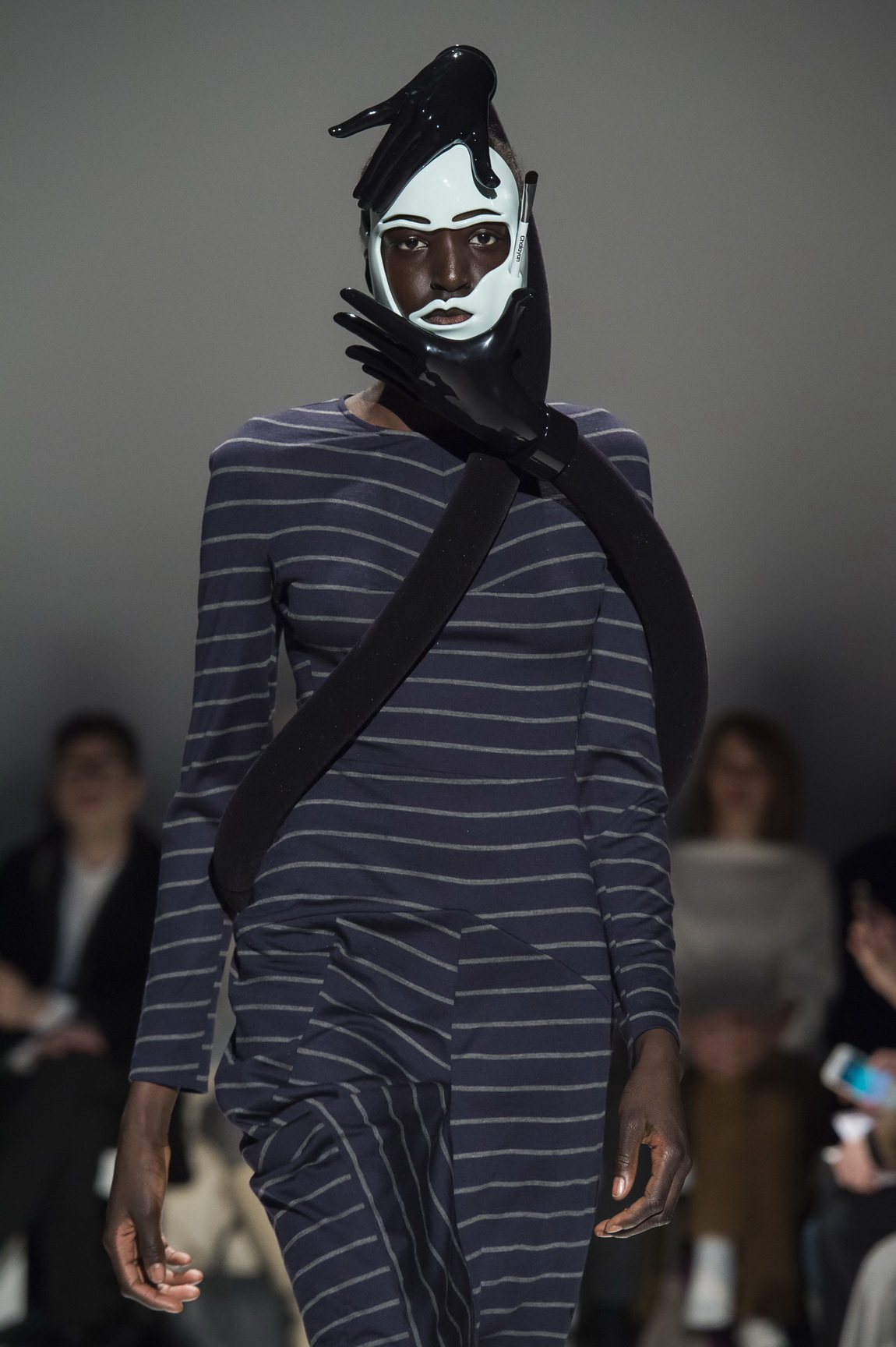


Credits
Photography @mitchell_sams
